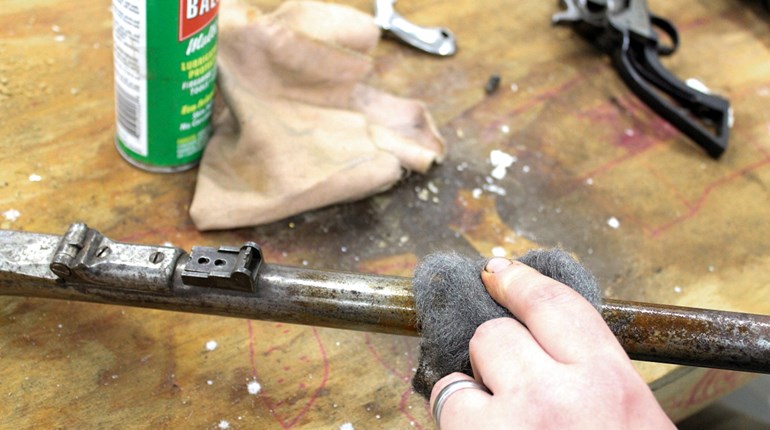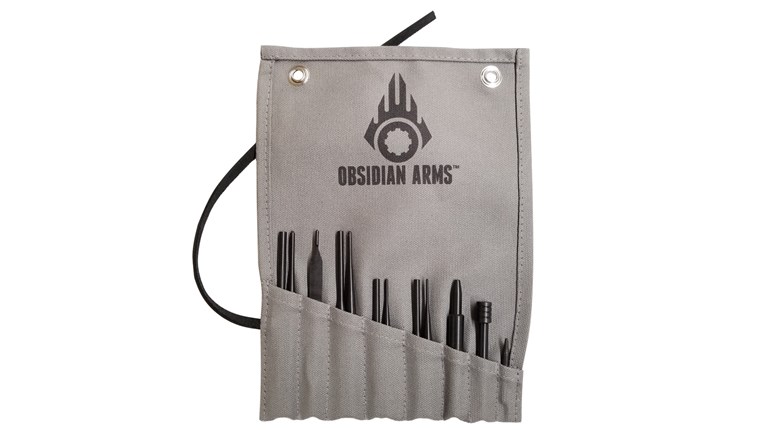
’Tis the season when numb trigger fingers begin to influence our rifle-shooting habits. For some, it’s time to make sure everything is clean, oiled and put away for a few months while they tend to indoor tasks. Others shoot through most of what winter dishes out in order to keep working, hunting or maintaining shooting proficiency. While having warm-but-tactile gloves, extended trigger guards and cold-friendly lubricants are helpful adaptations for winter shooting, they don’t mitigate the effects of frigid weather within the ballistic realm.
I’m guessing that most year-round rifle shooters have experienced some form of zero shift from summer to winter. Back when precision shooting was part of my formal job description, my co-workers and I knew to expect that our cold-weather points-of-impact could be anywhere from .5- to 1-MOA lower than our warm-weather zeros, depending on the rifle, cartridge and rate of fire. This was typically managed by dialing in one’s “cold-weather zero” on the riflescope and then leaving it that way until mid-spring. However, extreme temperature shifts presented greater challenges whenever we rapidly deployed to a vastly different environment, such as from moderate temps near sea level to Alpine-like weather in high-altitude regions.
In addition to ambient air temperature, humidity and air pressure affect how much shift you’ll see as winter sets in. Thankfully, the commercial development of powders that are relatively temperature-independent have made it easier to manage some of these variables. I first used these powders in specialized sniper loads a couple decades ago and found them to be quite effective.
The good news is that many of these extreme-type powers are available for handloaders and are incorporated into a variety of commercially available ammunition products. The bad news is that it’s difficult to tell which specific powder a given defensive, hunting or target load uses. While using temperature-stable powders in all ammunition would seem to be a no-brainer, it isn’t quite that simple. As one of the ammunition experts at Hornady explains, “In some circumstances, trade-offs exist, and temperature sensitivity is traded for better performance in another area if it makes sense for the intended application.” In other words, we have to give to get.
Since the early 20th century, ballistics wizards have attempted to provide tools for dealing with temperature shifts. Whether as formulas or general rules of thumb, I’ve found that they’re either too generic to be accurate or intended for a specific cartridge and unhelpful for anything else. Actual on-paper testing—with your specific rifle and cartridge(s)—and good record keeping is the best way to figure out how temperature shifts affect your shooting.
Unfortunately, building that database takes time, ammo and effort. Fortunately, modern ballistic programs take these and other inputs into account when predicting trajectories, making the job much easier than it used to be. Still, it pays to verify the numbers spit out by a program or app before relying on them in the field. Also, a dope card that captures the most important data makes for a good backup to dead batteries.
Newly minted subsonic-ammo shooters quickly become acquainted with another cold-weather reality: Temperature affects the speed of sound. This usually becomes apparent when projectiles that are supposed to move through the air quietly instead make that telltale, sonic “crack” that leaves you wondering if you’ve been duped by clever marketing. But, the ammo maker is not likely to be the culprit; it’s usually just physics.
As the temperature drops, the speed of sound in gasses (including air) also drops. As a result, the specific subsonic velocity to which that ammunition was loaded may be faster than the speed of sound at cooler temps. The speed of sound also depends on humidity and pressure, but it’s easier to calculate using temperature.
Subsonic ammo makers use different baseline velocities for their subsonic rifle loads. I’ve heard of everything from 1,000 to 1,120 fps being used, with most opting for the lower end. The good folks at Hornady recently told me that the company loads its subsonic products to be in the 1,050-fps range. There are several formulas for calculating the speed of sound, most of which make my head hurt. This one is fairly painless for sound moving through air:

Reversing the above formula shows that Hornady’s figure of 1,050 fps equates to the speed of sound at -19 degrees Celsius (approximately -2.2 degrees Fahrenheit). That gives subsonic shooters a wide margin before its ammo gets louder than it should be. Living well south of the Mason-Dixon Line for nearly four decades has taught me to stop shooting before it gets that cold.
If your goal is to limit sound in order to maintain good neighborly relations or to prevent spooking game in the area, Jack Frost has one more trick up his sleeve: Sound travels farther when ground-level air is cold. The simplest explanation is that this happens in winter because ground-level sound waves rebound off higher pockets of warmer air and then come back down to bounce off things at ground level.
Unlike warm weather, where sound waves emanate up without much impedance, cold-weather sound waves continue to bounce outward, traveling farther than their summertime cousins. Knowing this does nothing to help my attempts to shoot quietly, but it does explain why winter is the only time I hear trains many miles away from my house.
Whether the chilly season finds you in footie pajamas and nursing a third cup of hot cocoa or bundled up at the range, its cold temps force change on us all. We can’t alter the rules of science and math that govern how our rifles perform at this time of year, but knowing some of what’s going on can help us adapt to it.




































